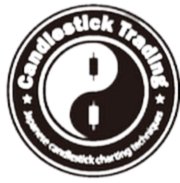Do I execute a BUY STOP order here
reader’s message
——————
Thank you for watching candlestick trading video
Hi Long,
Cross bar trading 7A & 7B GBP/CAD (Picture above was 59:49 mins in the webinar)
Both Dojis. A and B were discarded as not good for trading. You then switched to the 1 Hour chart and we have the picture in cross trading 7B
You talked of the appearance of Air pocket.
QUESTION
1.Please show the Air Pocket in this picture
2.Do I execute a BUY STOP order here?
3.What is the TARGET?
4 What is the STOP LOSS?
Regards
——————
click here
Hammer and inverted hammer patterns
Candlesticks patterns are being widely used for technical trading.
The high accuracy rate of the predictions done by candlestick patterns are making it more popular to the traders.
As a result, different new patterns and predictions are adding in the directories of candlestick patterns.
The ‘Hammer’ and the ‘Inverted Hammer’ are the most common patterns used by the traders.
The ‘Hammer’ is a bullish pattern which includes a single candlestick.
It is a reversal pattern.
The body can be either red or green.
The lower shadow is at least two times the size of the body, which make it look alike a hammer.
The most important thing about a hammer is it looks quite similar to a hanging man.
To figure it out, the traders need to concentrate on the patterns of the previous days.
A hammer after an uptrend is considered as a hanging man, as a hammer can only be seen after a downtrend.
A hanging man is a signal to sell for the traders, just the opposite of the hammer.
A green hammer is more bullish than a red hammer.
A hammer is quite a clear signal to “Buy” for a trader.
The ‘Inverted Hammer’ is a bullish type of candlestick pattern found after a downtrend.
It is usually considered as a trend-reversal signal.
The inverted hammer looks like an upside down version of the hammer candlestick pattern.
When it appears in an uptrend is called a shooting star.
The pattern is made up of a candle with a small lower body and a long upper wick which is at least two times as large as the short lower body.
The body of the candle should be at the low end of the trading range and there should be little or no lower wick in the candle.
Why is the Doji in diagram B not recommended for trading
